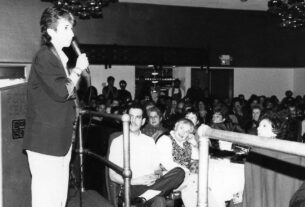Photo Credit: Assaf Peretz, Israel Antiquities AuthorityAssaf Peretz, Israel Antiquities Authority

Widespread excavations at the En Esur (Ein Asawir) archaeological site, located near Wadi Ara, a major artery that stretches from Hadera to Afula in the northern Sharon valley, reveal a planned city from the Bronze Age (end of the 4th millennium BCE), surrounded by a fortification wall, with residential and public squares, streets and alleys.
[embedded content]
‘);
_avp.push({ tagid: article_top_ad_tagid, alias: ‘/’, type: ‘banner’, zid: ThisAdID, pid: 16, onscroll: 0 });
An even earlier settlement, dating to the Chalcolithic period (7,000 years ago), was uncovered in deeper excavations made beneath this city’s houses. It seems that two abundant springs originating in the area in antiquity attracted human habitation throughout the period.
According to Itai Elad, Dr. Yitzhak Paz and Dr. Dina Shalem, directors of the excavation on behalf of the Israel Antiquities Authority, “There is no doubt that this site dramatically changes what we know about the character of the period and the beginning of urbanization in Israel.”

They suggest “this is a fascinating period in the history of the Land of Israel – Canaan of those days – whose population undergoes changes altering its face completely. The rural population gives way to a complex society living mostly in urban settings. These are the first steps in Canaanite culture to consolidate its identity in newly established urban sites; hence the immense importance of the ancient city exposed in the northern Sharon.”

“Such a city could not develop without a guiding hand in the form of an administrative mechanism. Its impressive planning, the tools brought over from Egypt which were found at the site, and the seal impressions, are proof of this. It is a huge city – a megalopolis in the context of the Early Bronze Age, where thousands of inhabitants, who made their living from agriculture, lived and traded with different regions and even with different cultures and kingdoms in the area,” they said.

In a public area of the city, archaeologists discovered an unusual ritual temple which is striking in its dimensions, whose courtyard included an enormous stone basin for the liquids used in the performance of religious rituals. A facility containing burnt animal bones – evidence of sacrificial offerings – as well as rare figurines, including a human head with the seal impression of a man’s hands lifted with the figure of an animal next to him, uncovered inside the temple.

“These findings allow us to look beyond the material into the spiritual life of the large community that lived at the site,” the archaeologists explained.
“These surprise findings allow us, for the first time, to define the cultural characteristics of the inhabitants of this area in ancient times. These inhabitants earned a living from agriculture thanks to the nearby springs. The remains of residential buildings, diverse facilities and public buildings are an indication of an organized society and the social hierarchy that existed at the time. The excavation revealed millions of pottery fragments, flint tools, and basalt stone vessels that were brought to the site,” Elad, Paz and Shalem said.

Following the Israel Antiquities Authority’s exposure of the unique excavations site, the national transport infrastructure company Netivei Israel has changed its road interchange plans, in order to protect the site of this impressive city. The archaeological ruins will be covered and assembled in a controlled manner, to be studied by IAA researchers, while the new interchange will be built high above the ruins.

Approximately 5,000 teenagers and volunteers participated in the excavations as part of the Israel Antiquities Authority’s Sharing Heritage Project, which aims to create an emotional and experiential connection to the past and cultural heritage, develop a sense of belonging to the land, and an awareness of the importance of preserving its antiquities.
Participants included Mateh Menashe Regional Council students, pre-military cadets, Eretz Israel and Archeology study track students, service year participants, Nahal groups’ members, special education students, as well as joint Jewish and Arab groups in collaboration with the international organization SHARE.
According to Noah Shaul, a guide on behalf of the Israel Antiquities Authority, “The challenges the archaeological excavation presented the students, and the uncovering of its findings, contributed to their personal development and enriched their acquaintance with the country’s landscape, its sites and history.”
<!–
Publisher #16: JewishPress.com
Zone #113: Comment Banner / (02) / News
Size #15: Banner 468×60 (Comments and Mobile) [468×60]
–> ‘);
_avp.push({ tagid: article_top_ad_tagid, alias: ‘/’, type: ‘banner’, zid: ThisAdID, pid: 16, onscroll: 25 });



